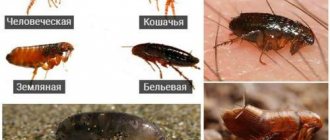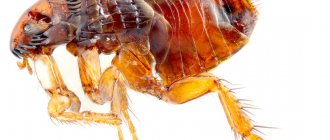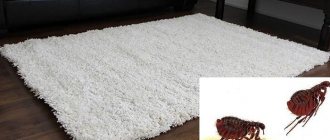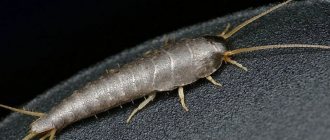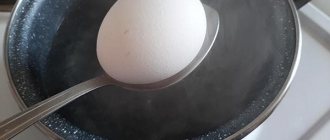Blood-sucking insects, which live mainly on the skin and fur of domestic animals, bring a lot of trouble to humans. Flea bites can lead to allergies, and especially impressionable people simply find it unpleasant to be in an apartment infested with parasites, which is understandable. In addition, in theory, parasites can be carriers of many dangerous infectious diseases, although in practice cases of infection from pests are extremely rare.
Before starting an active fight against fleas, you should determine whether these particular parasites are actually infested in your home, and not, for example, bedbugs or linen lice. That is why you should know how to identify adults (as well as larvae, pupae, eggs) and distinguish them from other common pests.
Features of the life of parasites
Fleas are unique creatures with a high survival rate. Insects are not picky about environmental conditions, hardy, and jump well in height and length. They live in dark, secluded places.
The optimal condition for existence is a temperature range from 20 to 30 degrees Celsius, humidity – within 60%. In such conditions, the renewal of offspring occurs every 20 days.
Interesting!
An adult can starve for more than 2 months, but in this state does not lay eggs. Flea pupae can easily tolerate temperatures of -10 degrees Celsius. At a temperature of about 28 degrees Celsius, the larvae emerge from the egg after 2 days.
The behavior, feeding habits, and living conditions of larvae and adults differ significantly. They live in different places and have different taste preferences. This situation provides high survival rates for parasites.
What fleas eat depends on the stage of development. For adult individuals, the source of nutrition is animal blood; in special situations, they bite humans. The larvae feed on food waste, rot, particles of epidermis, and feces.
Ground fleas: causes of appearance
What causes earth fleas to appear in apartments if they prefer to live in soil or sand? There may be several reasons.
If fleas live in the basement of an apartment building or private house, then the reasons for their appearance in a human home are simply the desire to get enough of the blood of humans or animals. Ectoparasites can climb to the first two floors; they almost never get higher.
The greatest number of flea attacks on humans and domestic animals occurs in summer and autumn. They may end up in an apartment if they have clung to the fur of a cat or dog that has returned from a walk, or they may also leave their favorite basement if the external conditions in it have changed to unacceptable. Rats and mice are also carriers of various parasites - frequent inhabitants of the attic, basement, and garbage chute.
Development of parasites
Life cycle of flea development
The life cycle of a flea is divided into several stages. An insect with complete metamorphosis.
- Egg. Under favorable conditions, it develops in about 14 days. When the air is very dry and the temperature is above 35 degrees Celsius, the eggs dry out. The same thing happens when you are on a cold surface. The size of one egg is no more than 0.5 mm. They look like a grain of sand. They become noticeable when there is a large accumulation in one place, often under the bedding or rug of animals.
- Larva. The development cycle lasts about 20 days. The rate of conversion also depends on environmental conditions. Under unfavorable conditions it can last up to 1.5 years. With an elevated temperature, she can be born quickly - in 2 days. Flea larvae go through 3 molts. Each time they increase in size. After approximately 18 days it pupates. After 2 days, a new formed flea emerges.
- Imago. Under favorable conditions, an adult lives for 3 months. During this period, 500 individuals of the new generation manage to lay eggs.
Externally, flea larvae differ significantly from adults. An ignorant person, having discovered larvae in his home, cannot understand what kind of parasites they belong to. Photos of parasites are presented below.
What do earth fleas look like?
Ground fleas are similar in appearance to cat, dog, bed fleas and other species. In the process of evolution, they lost their wings, but acquired powerful limbs for jumping and other devices for secure attachment to the body of humans and animals. In the thoracic region of ectoparasites there is a shield that works on the principle of a spring. It compresses and unclenches, giving strength and speed during a jump.
You can see what earth fleas look like in the photo. Key external distinctive features:
- An elongated, slightly rounded body that is flattened laterally.
- A durable shell reliably protects the body of the parasite from external adverse factors.
- Body length reaches 5 mm.
- The shell consists of scutes, and the body is covered with hairs.
- Piercing-sucking mouthparts.
The structure of the shell and the hairs on the body provide reliable fixation and easy movement over the fur of pets and human skin. Ectoparasites prefer to remain unnoticed and are nocturnal.
Appearance of the larvae
Flea larvae
What flea larvae look like depends on the stage of development. Initially they are born as white, translucent worms. Length does not exceed 1 mm. Their food consists of feces of adults, skin remains, and rot. They begin to eat actively.
Over time, worms accumulate in places where they can find food:
- dog bedding, cat mats;
- trash bins;
- baskets for storing vegetables, flower pots;
- pet toilet, feeders.
A week later, the first molt occurs. Flea larvae increase in size, but do not change appearance. The worms are already more like a caterpillar. The contents of the esophagus are visible through the transparent body. The color becomes dirty gray. During the entire developmental stage, the flea molts three times. Increases to 4 mm.
At the last stage of flea development, pupation occurs. The larva envelops itself in a cocoon and stops moving. Already after 2 days it emerges from there as an adult.
On a note!
Flea larvae do not live on cats' bodies. You should look for them near the sleeping place, near the toilet. Check all the places where your pet likes to relax and spends a lot of time. Dogs also develop fleas. Animals are not even the host for these parasites. Development occurs outside the body.
Adults
The parasites that most insecticides target are adult fleas. An adult insect can reach up to 5 millimeters in size, has a black (these are young fleas) or brown color, and is covered with scales. In the animal's fur, the pest is somewhat reminiscent of a small grain of a plant.
The main difference between fleas and other insects: pests can jump up to thirty centimeters in length, escaping from danger or moving from victim to victim. Sometimes these jumps can be seen with the naked eye. Fleas differ from bed lice in their large size, and from bedbugs in their ability to jump.
Fighting methods
To kill fleas, folk remedies and professional preparations are used. It all depends on the degree of infection of the room or animal.
Methods for destroying eggs and larvae
Destruction of eggs
To exterminate the flea population, temperature is used. You can kill eggs by freezing them or washing them at high temperatures. Flea eggs are not afraid of the action of insecticides. Pests are destroyed immediately after they are born. Since the larvae do not have time to complete the full development cycle, the parasite population dies.
On a note!
It is necessary to wash your pet's rug at a high temperature, or take it out into the cold, dry it thoroughly, and leave it for two days. You can sprinkle snow on top to increase efficiency.
Fighting larvae
You can get rid of it with powder or dust. In places of detection or probable accumulation, sprinkle paths with boric acid, treat the surface with Mashenka chalk and Clean House dust. The poison enters the body through contact. The destruction of parasites occurs in 10 days. The poison remains active on the surface for about 2 months.
How to get rid of adults, their eggs, pupae and larvae
The fight against parasites should be comprehensive: carried out in several ways and include repeated treatment of the premises over time, as well as preventive measures. You should not only get rid of annoying insects from your pets, but also disinfect your apartment.
There are several ways to deal with pests that cause discomfort to your cat or dog. Most often used:
- aerosols;
- flea collars;
- detergents (shampoos and soaps);
- drops on the withers.
Flea tablets and injections are also common abroad.
All these remedies are relatively safe for the animals themselves, but have a detrimental effect on parasites: the poison paralyzes the pest, which causes the vital organs and systems of the insects to fail, and the flea dies. There will be no harm to your pet from using such drugs if you choose the right product (according to the animal’s age, breed, state of health, weight) and use it in accordance with the instructions.
The premises are also treated using insecticides or traditional methods. In case of severe infestation, it is more advisable to call a team of specialists to quickly, effectively and safely treat the premises from parasites.
Bed bug bites
Flea bites, like mosquito bites, are located in a chaotic order, only on open areas of the body. The bug's "prints" line up in one line.
Features of bedbug bites
- Each bug feeds periodically, going out to hunt approximately once every 3 days.
- The bites are arranged at a distance of up to 5 cm from each other in a clear line.
- Coagulated blood is visible at the site of the bite.
- The body responds to bites with a strong allergic reaction; the bites themselves are painless, because the bug injects an anesthetic substance along with saliva that works for 20 minutes.
- Bites are concentrated on soft areas of the body: stomach, neck, inner thighs, back. The bug cannot bite through fabric, so it feeds only on open areas of the body. Children and women, whose skin is thinner and softer, and whose blood vessels are located closer to its surface, are more often attacked.
- The bug feeds exclusively at night.
- The insect lives both in unsanitary and in the cleanest rooms.
- The parasite can be transferred to other rooms on clothing.
Attention!
The young bedbug larva does not inject an anesthetic substance; its bite causes pain. Therefore, the “young” insect can be detected at the moment of the bite.
What is the danger to humans?
Adults and larvae can be carriers of serious diseases, which include:
- tularemia;
- Bubonic plague;
- anthrax;
- relapsing and typhus;
- encephalitis;
- trypanosomiasis and other serious diseases.
The risk of infection always exists, but it is insignificant, since the likelihood that any individual is a carrier of infection is small.
In addition to epidemiological diseases, fleas carry fungal diseases, salmonellosis and others.
